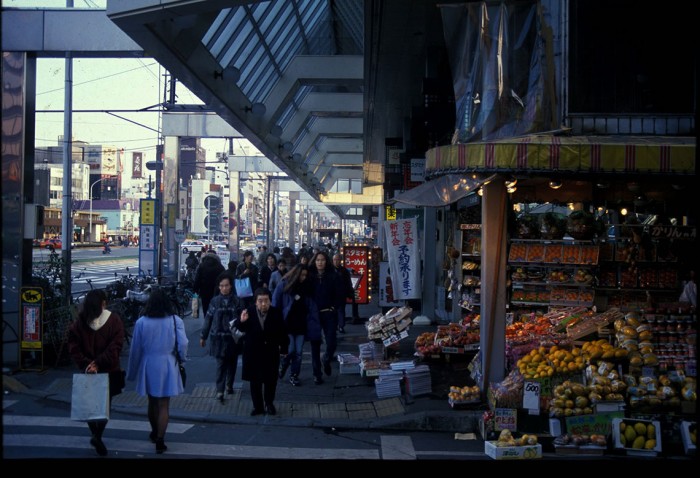
It may seem odd to refer to Tokyo as a village. It has, after all, a population of about 8 million within the narrow definition of the city and some 30 million within commuting distance from the city center. Yet it is a village in the sense that each area of the city is very much like a village and in most cases each area grew out of a village. To call Tokyo a series of villages was common-place as early as 1879 when a man accompanying former US President Grant remarked on the populated areas which were separated by open ground and clumps of trees.
Each area is small and can be walked through easily. Each has all the shops necessary for daily living; vegetable, meat, fruit, fish, magazines and books, pachinko, liquor, coffee and tea, appliances and sundry shops are usual and often there is more than one of each. Larger supermarkets and department stores are absent, keeping the scale small. Most dwellings are two stories high although the occasional high-rise apartment may distort the village-like impression. Population within each ‘village’ is often very stable and many families can trace themselves back several generations in the same area. In these older areas, the stability of population supports a social network that draws people together,often in work groups that cooperate in small, daily tasks that improved the quality of the neighborhood and at the same time keep people in close contact with each other. Festivals at shrines and temples may be large affairs at the most popular temples, but they are more often small, intimate gatherings that attract no more than the local residents. Kanda Shrine and its festival attracts national television coverage and several hundred thousand spectators, but most festivals see no more than a few thousand or possibly ten thousand people.
The problem in maintaining this kind of atmosphere is that people do move out of neighborhoods as companies increasingly transfer workers from one end of the country to another. A more severe problem is that many people move into existing neighborhoods and, since they usually have no prior connection with the people of the area, they find it very difficult to enter the existing social networks. The human relationships which are necessary are absent: no classmates, no friends, no go-betweens are present to bring down the barriers.
Some outer suburbs of Tokyo are not at all village-like. They are made up mainly of high-rise buildings arranged in vast new developments which destroy any feeling of a tightly organized neighborhood. Older, inner areas of the city, particularly those dating back to the time when the city was called Edo maintain their very distinctly village atmosphere. The residents may still consider themselves and call themselves Edokko (‘Children of Edo’).

